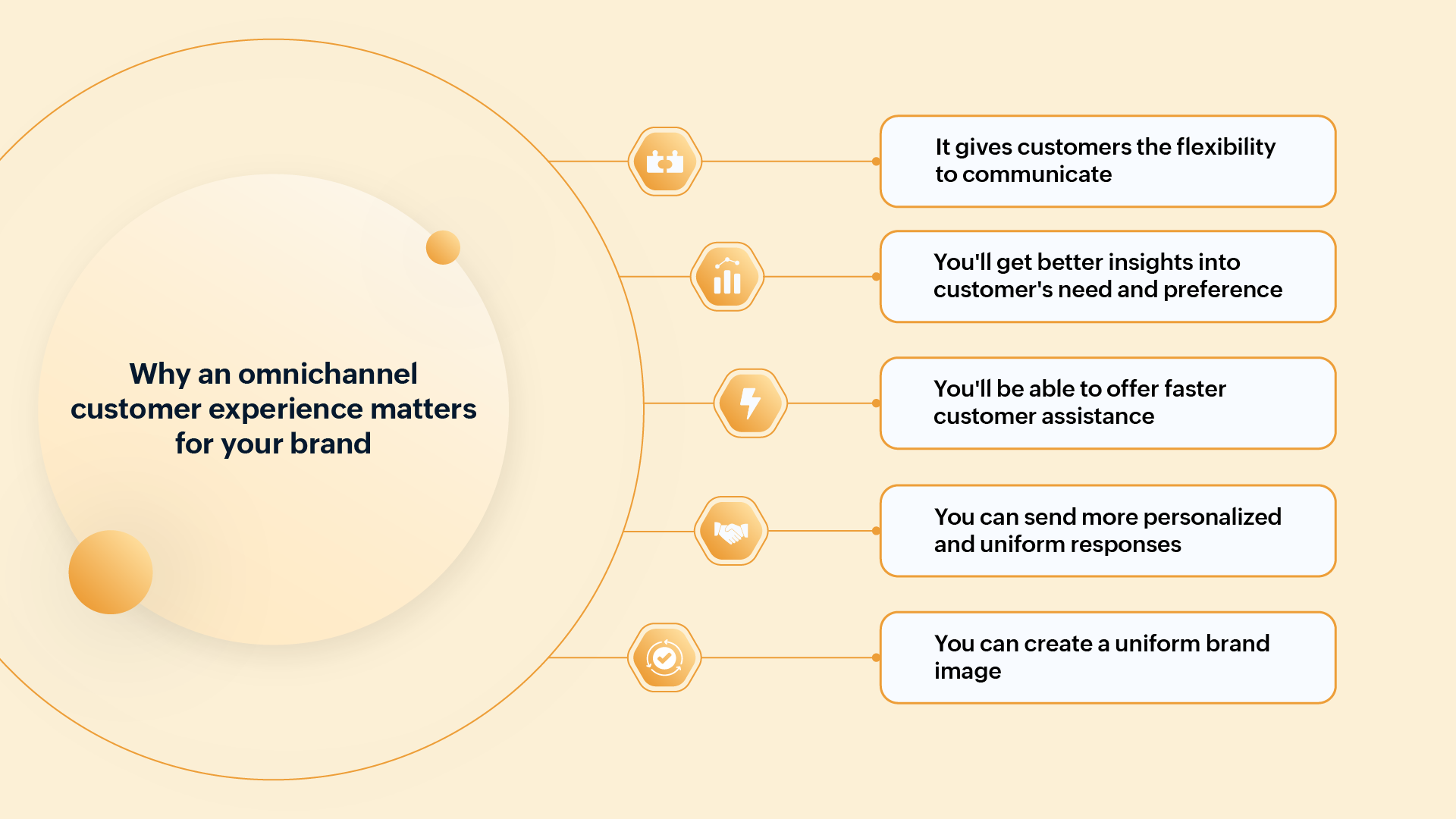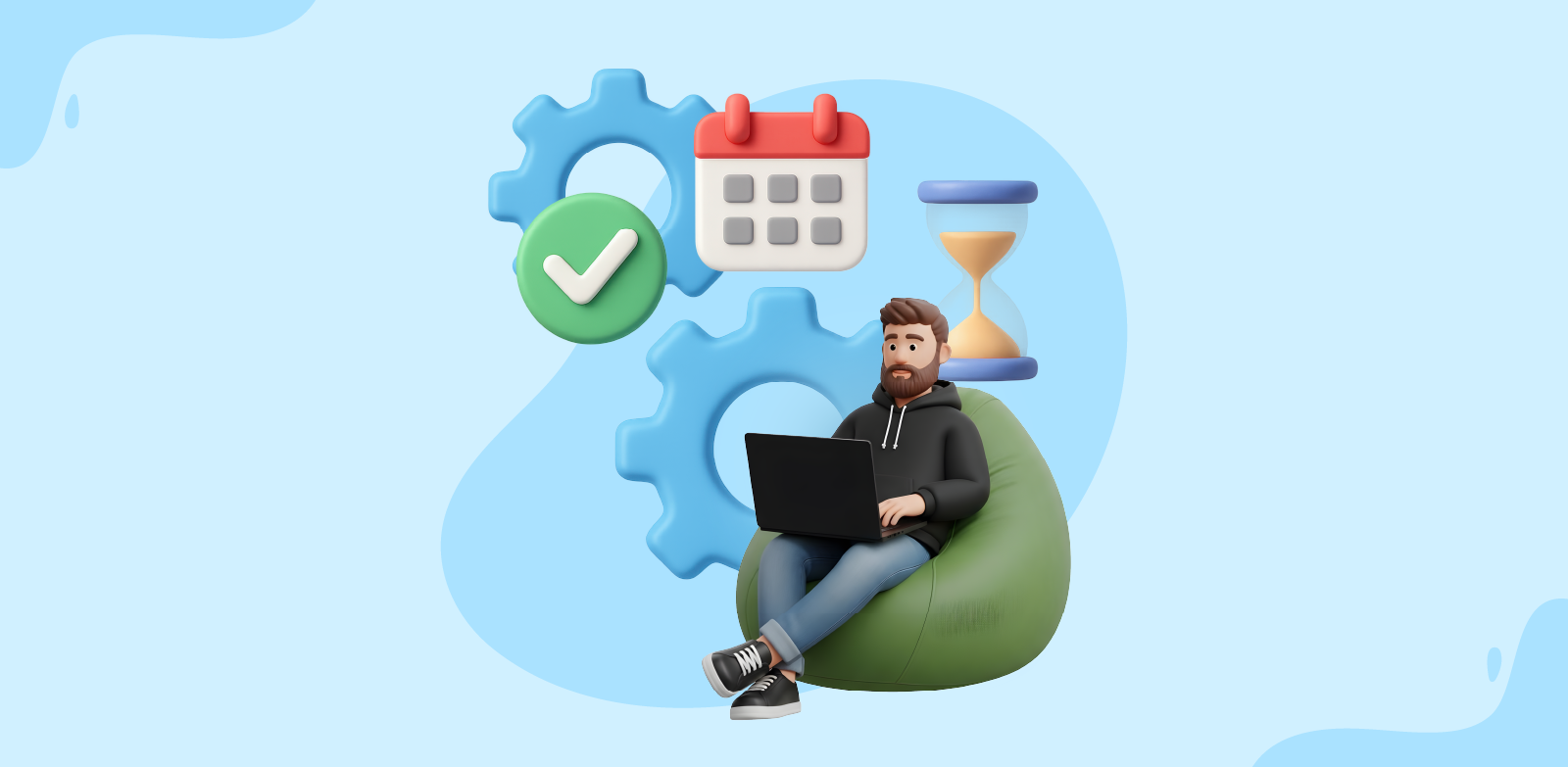- HOME
- Best practices
- How to provide a unified omnichannel customer experience
How to provide a unified omnichannel customer experience
- Published : December 5, 2024
- Last Updated : December 5, 2024
- 254 Views
- 5 Min Read

Nowadays, when instant connectivity is the new norm, customers expect businesses to be present on the channels they prefer. From social media messaging and instant chat for a quick and real-time conversation to email for more formal inquiries, they want interactions to be fast, consistent, and personalized no matter which channel they choose.
So, how smooth is your customer's experience when they connect with your brand? Do they feel the same level of satisfaction when they switch channels? Is it easy for your teams to handle communication from multiple channels and provide consistent support? To ensure that all of these happen, you need a strategy that will help your brand provide the same level of support and experience to customers across all channels.
With an omnichannel approach, your teams can maintain uniform interactions, keep communication clear, and provide personalized responses regardless of where the customer connects. Whether it’s your social page, email, or instant chat app, everything is under the same roof so that you get a complete view of your customer interactions and ensure that nothing is overlooked.
With all of that info at hand, your teams can deliver more consistent and personalized support regardless of how the customer chooses to reach out. Even if the customer switches channels multiple times, this continuity will remain, and they'll always receive a prompt response that picks up right where they left off.
This seamless omnichannel experience for your customer will also give your business an edge over the competition.
Omnichannel customer experience: Best practices
To manage omnichannel communication, you need to use a few smart strategies. Here are some best practices to help you stay on top of your omnichannel strategy and have a better customer experience.
Bring all of the channels together.
When you have one unified inbox, the complexity of managing multiple channels will no longer trouble you. All of the conversations from different channels become accessible within a single centralized place. Now, no messages are missed, and your customers get a timely reply no matter what channel they choose.
Combine customer data.
To provide a more personalized response, you need customer data from other apps like your CRM. You can integrate your shared inbox platform with other apps your teams use, so that they have access to all of the relevant customer info without having to switch between different platforms.
Collaborate for better support.
Use collaborative features such as Share drafts or internal discussions with your team members and collaborate over customer queries, upcoming projects, or new ideas for your business. This will help you serve your customers better.
Automate and streamline your workflow.
You can easily reduce manual effort and improve your team productivity with automation tools. Set up automation rules to categorize threads based on topic or urgency, assign them to specific team members, and tag them based on different criteria for better support. Additionally, create response templates to send uniform responses to common questions. This will free up your team’s time to work on more important customer needs.
Prioritize conversations based on urgency.
Not all incoming messages are of equal importance. Set up time-based response goals rules to ensure urgent inquiries are handled first. Customers are always happy with fast responses, especially when their issues are urgent.
Manage threads smartly.
When you connect multiple channels to a single inbox, there are chances of having duplicate messages from the same sender. You can mark such threads as duplicate to remove them from your view automatically so you can work on other important conversations without any distraction.
Keep your inboxes organized.
You can keep your inboxes more organized by moving the threads across inboxes to ensure they're in the right place. This is especially useful when you receive a message in one inbox but need to respond from another, or when a thread has to be moved to a different inbox for better assistance.
Track and monitor performances.
Use analytics tools to monitor key performance indicators like response times, resolution rates, and overall communication patterns for your inboxes or teams. Additionally, analytical reports help you identify communication trends and patterns over a given time to understand your customer's behavior.
Create a better omnichannel customer experience with Zoho TeamInbox
Let's say Lisa runs an online event management company. Her customers and prospects often reach out through multiple channels, including email, social media, and instant messaging apps. To deliver a seamless customer experience, Lisa decides to set up an omnichannel platform using Zoho TeamInbox.
Now, Lisa's team can manage and view all of their interactions across multiple channels—like email, instant messaging, and social media from a single unified place. If a potential customer finds her Instagram page and sends an inquiry via Instagram DM, it lands directly in the team's shared inbox in Zoho TeamInbox. From there, Lisa’s team follows up with the customer, gathers contact details, and further assists the customer over WhatsApp because they know it's easier for them. After a quick live chat, the customer finally receives the detailed order confirmation over email and gets notifications in chat to keep them updated.
Thanks to the omnichannel strategy with Zoho TeamInbox, everything was managed from a single platform, making the process faster and more convenient for both Lisa's customers and teams. This seamless approach also helps her team create a holistic customer profile and understand their preferences better. Even Lisa's customers are now happier and more satisfied as they can reach out to Lisa through their preferred channel and always receive a prompt response.
Why Zoho TeamInbox?
With our omnichannel platform and real-time collaboration tools, Zoho TeamInbox helps you and your teams manage customer interaction more efficiently. Our multichannel inboxes smartly combine your communication channels—such as email, WhatsApp, Telegram, Facebook, and Instagram direct messages—into one unified inbox.
This way, everything becomes centralized under a single platform, and your teams will have easy access to all the information they need. They can easily communicate with customers using any channel without repeating information or switching over to other platforms. This ensures that no matter how your customer interacts with your business, they'll receive a consistent and seamless experience, and they have the privilege to choose how they want to connect, based on their convenience.
Zoho TeamInbox is now available on all devices, from smartphones to desktops, to boost your productivity wherever you are. Say goodbye to fragmented communication and create a unified omnichannel platform with Zoho TeamInbox, where your customer's experience truly matters.



